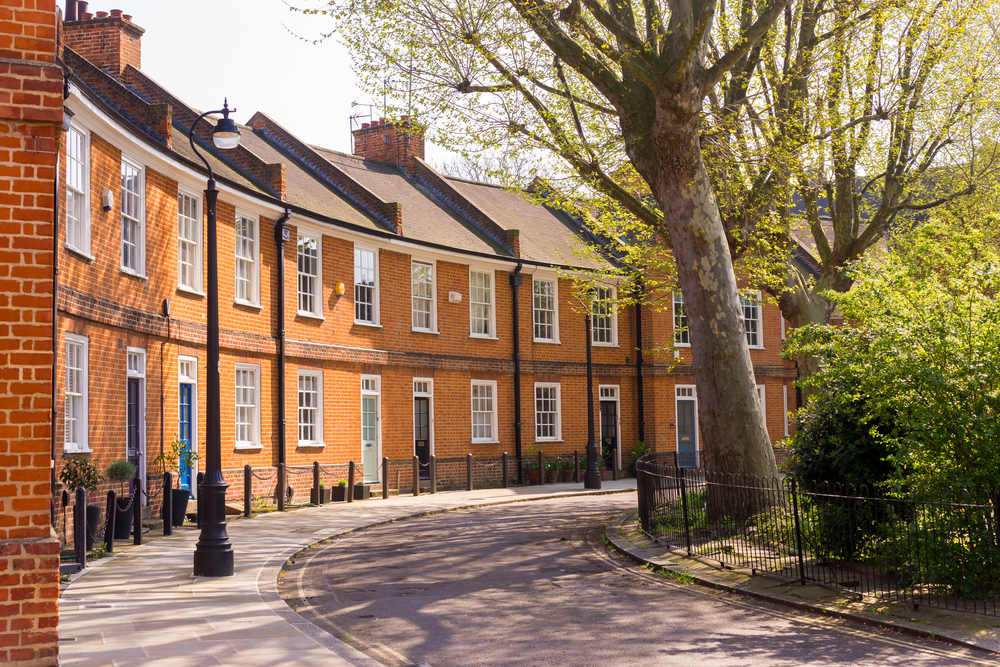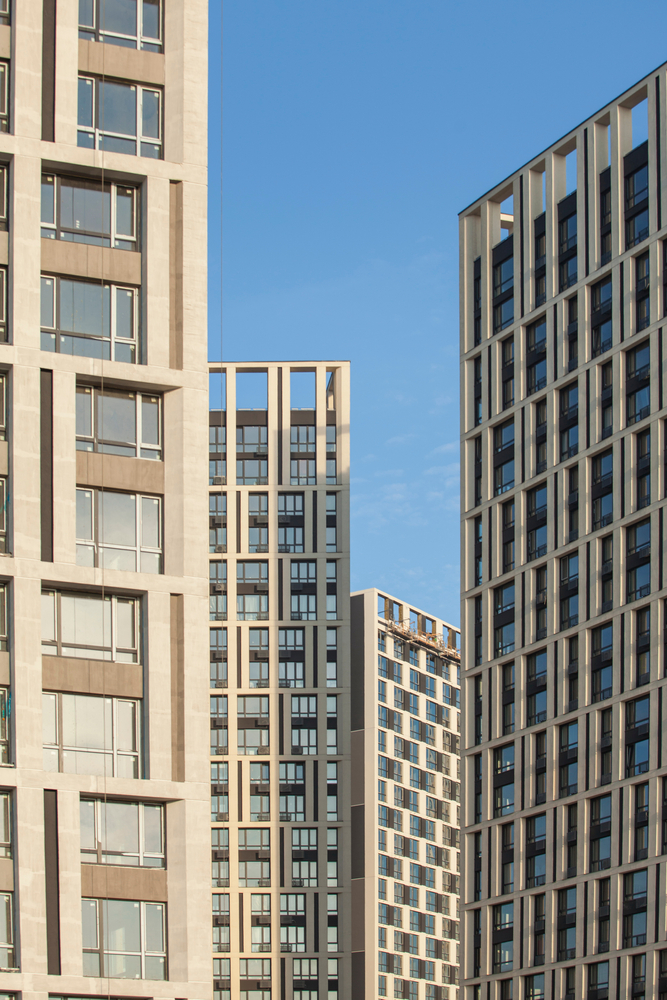The London property market update – April 2022

The UK property market continues to go from strength to strength, with house prices up 0.5%
in February or £1,478 in cash terms, and the London property market is bouncing back too.
There’s an interesting combination of factors at play, from ongoing tight supply of larger homes, a robust level of mortgage approvals and an uptick in international buyers all boosting the UK and London markets.
Let’s take a closer look at the country’s property hotspots, how prime Central London is faring, and what the market can expect in the coming months.
The resilience of the UK housing market
The UK housing market continues to defy the odds – and some insiders – with February seeing an average increase of 1.7% in house prices, up from January’s 0.8%, the eighth successive month of growth.
The average house price in the UK has increased by more than 16% or £38,709 since February.
2020, adding on average £27,215 in the past 12 months – the largest single-year cash increase
for more than 39 years – while the average cost of a UK home hit more than £260,000 for the first time last month.
What’s behind those numbers?
There are several reasons behind the UK housing market’s impressive growth, which has endured long after last summer’s stamp duty holiday and continues to surprise some industry insiders.
Tight supply in the housing market
First and foremost, the pandemic-prompted race for space has reduced the supply of houses on the market, particularly larger homes, as potential buyers seek to climb the property ladder.
That has had a knock-on effect on annual house price growth and boosted the housing market.
However, there are some signs that the situation is starting to change, as the National Association of Estate Agents reported an 80% increase in new property listings in January compared to December, but it’s worth remembering the starting point was very low.
There are also reports of growing requests for home valuations, which could further add to housing stockpiles, but it remains very much a buyers’ market.
Robust mortgage approval numbers
Prospective buyers are also finding it easy to secure a competitive mortgage at a low rate amid the UK’s economic recovery, even after the Bank of England’s recent rate rise.
It said January mortgage approvals rose 4% to 73,992, their highest figure since July 2021, up 7.2% on 2020 and 12% above the 2017-19 average for the month.
UK regional house price growth

Several regions in the UK saw double-digit annual house price inflation, with Wales once again leading the pack with 13.8% growth and an average property price of £207,184.
Hot on its heels is the South-West, with 13.4%, robust quarterly growth of 3.5% and an average house price of £293,968.
In Northern Ireland annual house price growth was 13.1% YoY in February, taking the average price to £173,911, while Scotland saw a 9.2% hike in house prices to an average of £193,777 – the slowest growth of any UK region outside London.
What is happening to the London property market?
As life returns to what we all consider normal after the easing of Covid restrictions, the capital’s property market is reflecting that uptick in confidence.
Growth continued in February, with house price inflation rising to 5.4%, the most since the end of 2020, with 30 boroughs seeing peak prices.
Prime Central London gets a boost
While the capital’s prime and super-prime markets were bolstered by UK buyer demand during the pandemic, London remains a lure for overseas buyers.
Between July and December last year, 43% of prime central London properties were snapped up by foreign buyers, up from 31% in the first half of 2021.
European home buyers were the biggest drivers of the luxury London housing market, with 14% of sales, followed by Middle Eastern buyers at 7%, down from the 11% of sales seen in 2019.
What will happen to London house prices in 2022?

There’s an interesting mix of demand in the London housing market. It takes an average of 49 days to sell a property in the capital, 23 days longer than the rest of the country, but there are signs of change.
Regions such as Notting Hill and Holland Park are of growing interest to UK-based prospective buyers, while the super-prime flat market is also starting to pick up speed.
By December last year, the price gap between inner and outer London reached its narrowest since the same period in 2009.
The average home in inner London now costs 31% or £145,400 more than one in outer London, down 33% from the end of 2020.
Analysts predict an 8% increase in the value of prime central property in 2022, rising to almost 24% over the next five years, amid growing optimism that international buyers will continue to drive London house sales.
Figures for property in London’s prime leafy suburbs are equally encouraging, with 4% growth in 2022 and just under 14% over five years.
A word on the London rental market
London achieved 10.3% growth in the year to December 2021, the strongest across the UK, and is expected to continue on an upward trajectory.
Tenant demand was up 25% in the last weeks of 2021, driven by the return of international students and professionals to offices.
In the residential sector, strong demand for rental properties across central London with more space combined with low housing stock will force rental values upwards, with some analysts predicting prime central London rents will rise by 6%.
A look ahead for the UK and London housing markets

There are many factors that will influence house price growth in 2022, including the ongoing tight supply across the country as well as in London, and high demand expected both domestically and from overseas buyers.
The global financial crisis still has its role to play and could impact average property values at some point in the coming months, but let’s take a look at the wider landscape.
Rising interest rates
As expected, the Bank of England increased the interest rate in February from 0.25% to 0.5%, to prevent rising inflation.
Despite this, property prices and mortgage approvals have continued to rise thanks to attractive mortgage rates that kept monthly repayments within household budgets, especially at the higher end of the market.
Analysts predict the BoE Monetary Policy Committee will push the interest rate back to the pre-pandemic benchmark of 0.75%, thanks to some of the other issues the country is facing.
Consumer confidence
The UK housing market is currently in buoyant form and while rising interest rates may cool it a little, annual price growth is more likely to be impacted by the effects of the global financial crisis.
Rising energy bills, thanks to Ofgem’s increased price cap, and other economic concerns are weighing heavily on consumer confidence.
They could prevent first time buyers from getting a foot on the property ladder, or make those already on it think twice about up or downsizing.
The London housing market in 2022 – conclusions
Going by the first few months of this year, there will be more people looking to move in 2022, though perhaps not on the scale seen in 2021.
The demand for bigger properties and more space is set to continue, with London’s prime leafy areas echoing the broader, national trend and bolstering UK house prices.
Interest rates will likely rise to offset spiralling inflation, impacting on mortgage repayments and potentially affecting buyer demand in some quarters. However, it could also free up more housing stock in other regions, as people decide to sell their homes to save money.
Uncertainty over the UK economy and annual growth, buffeted by high energy bills and interest rate rises, will continue as the after-effects of the pandemic play out.
How LUX Property Consultants can help
Whatever your property needs, we will bring all our expertise to bear and find you the perfect forever home or ideal investment property: putting you exactly where you want to be.
To discuss your property needs for 2022, contact Jonathan on +44 (0)7971832989, email jonatha[email protected] or visit our contact page here.
